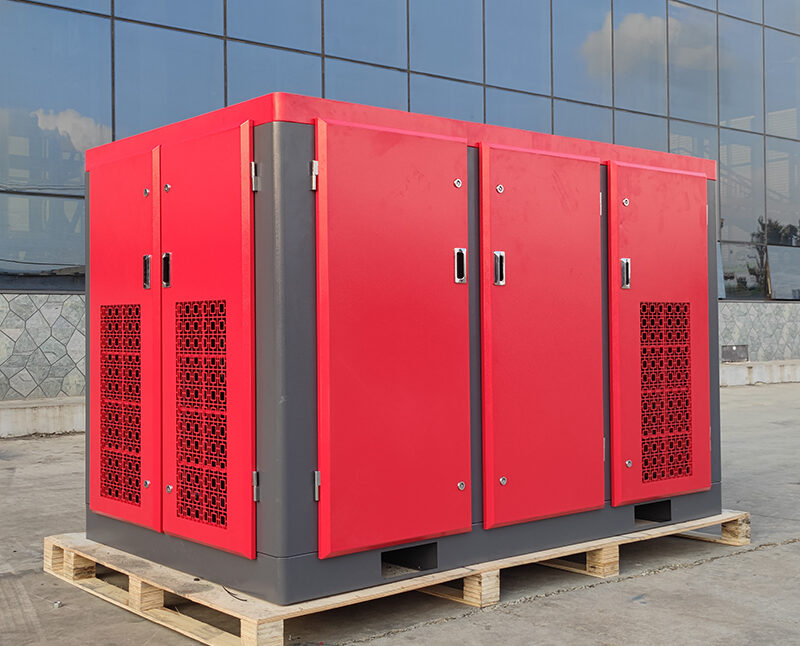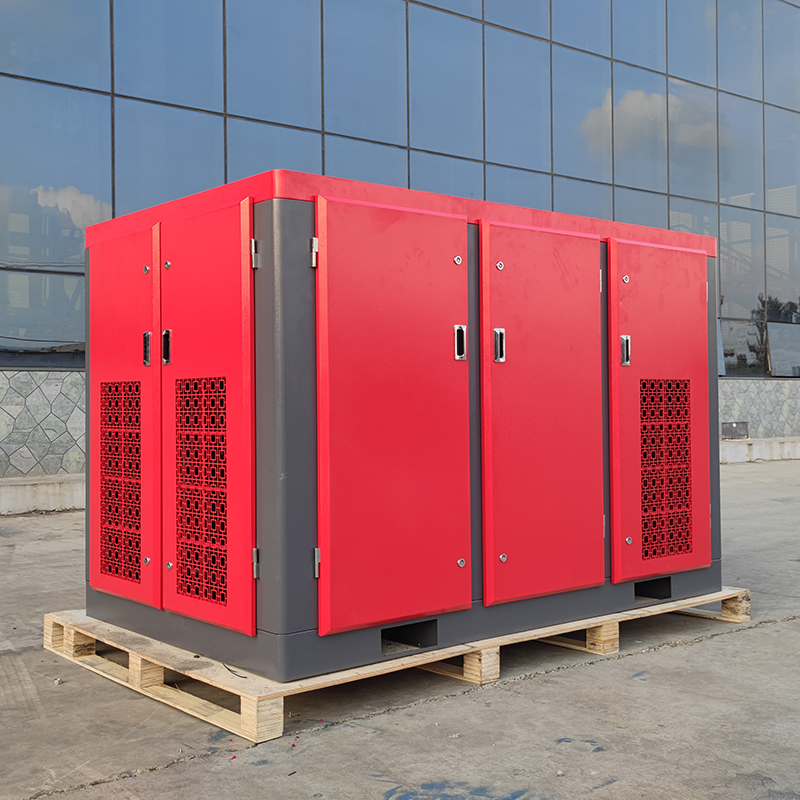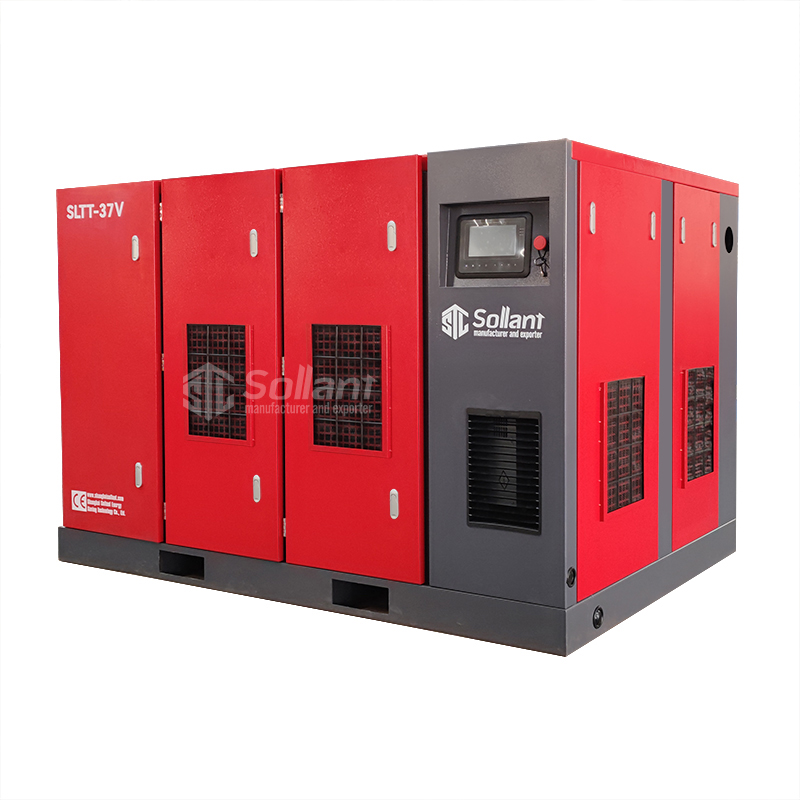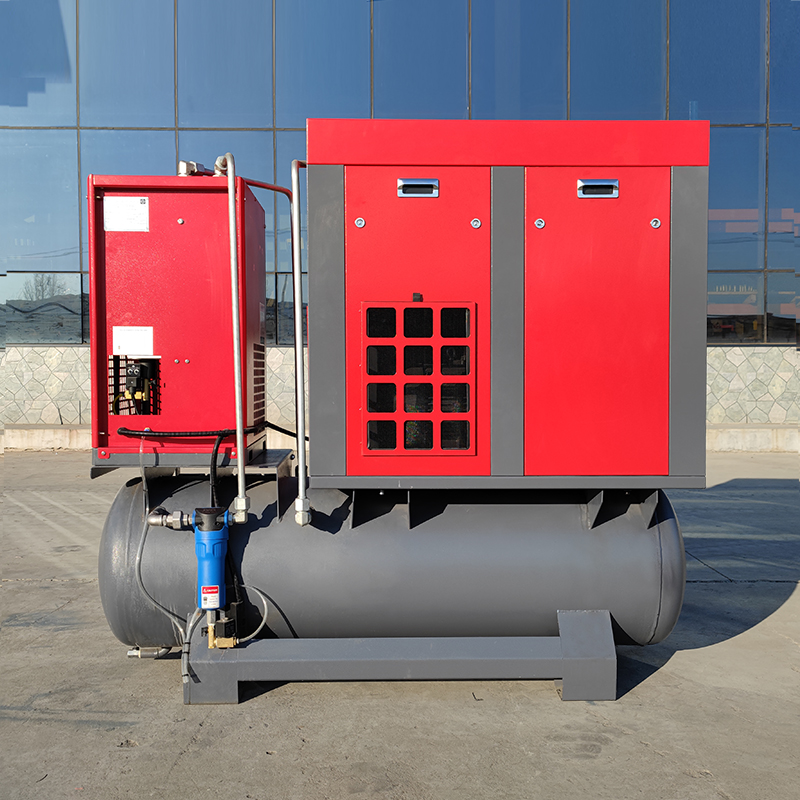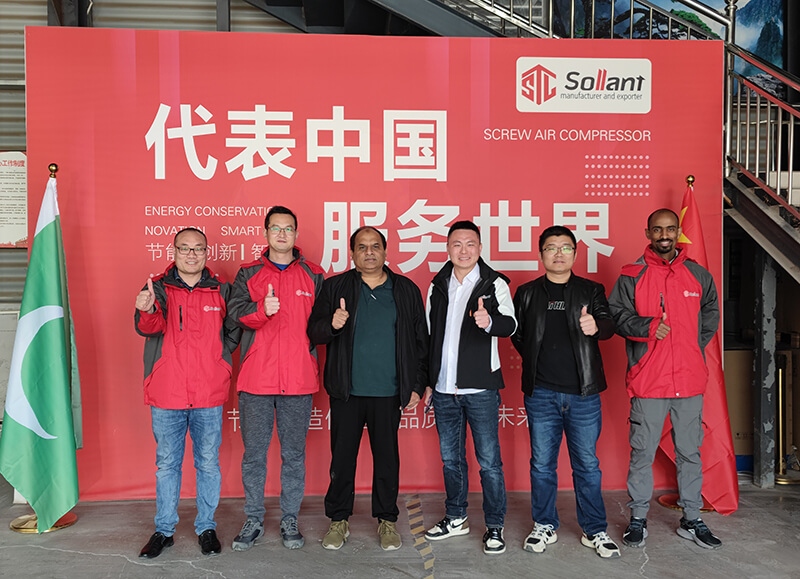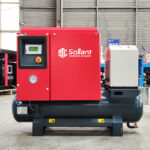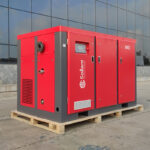As the core equipment in industrial production, the proper installation and startup commissioning of air compressors are crucial. To ensure long-term stable operation, the following detailed steps and checks are essential.
1. Air Compressor Installation Environment Requirements
- Indoor Placement: The air compressor should be installed in a well-ventilated, dry, and dust-free indoor environment. The area should be free from corrosive gases and have a reliable power supply.
- Safety Precautions: Flammable and explosive items must not be stored near the air compressor. Maintain a safe distance to ensure secure operation.
2. Electrical Connection Check
Before starting the air compressor, verify the electrical connections with these steps:
- Power Cord Inspection: Ensure the power cord is securely connected to avoid any looseness or poor contact.
- Voltage and Frequency Confirmation: Verify that the voltage and frequency match the equipment’s specifications to prevent electrical issues.
- Circuit Safety Check: Inspect the electrical circuit for any signs of damage, short circuits, or grounding problems to ensure the system’s safety.
3. Cooling System Inspection
The cooling system’s proper function is vital for the air compressor’s performance. Before startup:
- Cooling Flow Check: Confirm that the cooling water or air flow is unobstructed and the temperature is normal.
- Water-Cooled System Check: For water-cooled systems, ensure the water pump is operational, the water volume is sufficient, and the water pressure is stable.
- Air-Cooled System Check: For air-cooled systems, ensure the radiator is clean and the fan operates normally to maintain effective heat dissipation.
4. Lubrication System Inspection
A well-functioning lubrication system is key to the air compressor’s longevity. Before startup:
- Oil Level and Quality Check: Verify that the lubricating oil level and quality meet the equipment’s requirements.
- Pipeline Sealing Check: Inspect the lubrication system’s pipeline connections for proper sealing to prevent oil leakage.
- Oil Pressure and Filter Check: Ensure stable oil pressure and a clean oil filter to maintain optimal lubrication.
5. Startup and Initial Operation
After completing the above inspections, proceed with the startup:
- Power Switch Settings: Set the main power switch and the air compressor’s body switch to the off position.
- Power On: Turn on the main power switch, then the air compressor body switch once the display screen activates.
- Monitoring: Perform switch operations gently and closely monitor the operating parameters like pressure and temperature to ensure normal operation.
- Initial Load Setting: Start with a lower load, gradually increasing it while observing the equipment’s performance to confirm normal operation.
6. Debugging and Adjustment
Once the air compressor is running smoothly, further adjustments and debugging are necessary:
- Parameter Adjustment: Fine-tune parameters such as the pressure switch, unloading valve, and pressure regulating valve for optimal automatic control and adjustment.
- Monitoring and Recording: Observe whether pressure, temperature, and vibration parameters remain within acceptable ranges. Document and address any abnormalities promptly.
- Performance Optimization: Adjust the air compressor based on actual work requirements to achieve peak performance.
Summary
The installation and startup commissioning of an air compressor is a meticulous process requiring attention to detail. By adhering to the above guidelines and precautions, you can ensure a smooth startup and long-term stable operation, providing reliable power support for industrial production. This comprehensive guide will help in achieving optimal performance and longevity for your air compressor.
What is the reasonable installation height of the air compressor?
Air Compressors: 6 Essential Benefits of Scale Cleaning Agents

